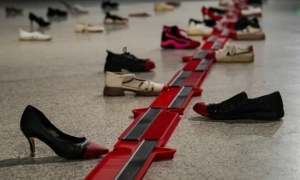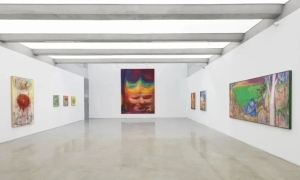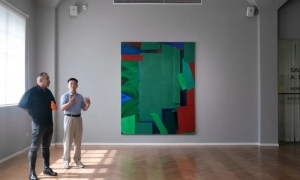“角落”其实是一个文化地理的概念,主要指远离文化、经济中心的那些偏僻、落后的地方和社区。上个世纪二十年代巴黎的蒙巴那斯、1936年纽约的格林尼治村,还有今天昆明的创库、成都的蓝顶、重庆的坦克库、北京大山子的798等等,都是这些宏大城市的“角落”,是曾经被权利、政治、文化和金钱“遗忘”的地方。
但是,时过境迁——“雕栏玉砌应犹在,只是朱颜改”。往日的文化、经济“角落” 在经过一番包装、改造后,已经闪亮登场,俨然变成了这些城市最时尚、亮丽的景点,也是艺术家富集的“卖场”。798原是北京西郊一个破败的工业区,工厂倒闭、工人下岗,但随着画廊、出版商、艺术家工作室、表演中心、设计公司、展室、音乐酒吧、餐厅的入驻和聚集,近年来逐渐发展成为北京最具国际都市文化色彩的先锋艺术社区。
贵阳虽然是贵州省的省会和中心城市,但也只是中国辽阔版图上的一个“角落”。与邻近的昆明、成都、重庆等城市不同,贵阳的艺术家们很难形成一个固定的艺术家社区。他们好像更喜欢散兵游勇式的、打一枪换一个地方的“游击战”方式。正是在这个意义上,我把贵阳当代艺术的交流形式称之为一个流动的场域,这是一种真正保留了“野生”的口传耳闻方式的艺术空间,这个空间不是物理意义上的,更多地与精神、气质、思想、生活方式和想象力有关。
“角落”是去中心的,或者说“角落”根本就不屑与“中心”一争高下。也许正是因为这种自在自为的“野生”状态,这些“野生”的艺术社区就像“湿地”一样,维系着艺术“江湖”的生态平衡,成为推动中国当代艺术自我生长的一股鲜活的动力。
贵阳的“城市零件”是最近才成立的一个新兴的艺术社区,也可能是我见过的中国最小的也是最有活力的艺术家社区,聚集了贵州许多新锐和富于创造精神的青年艺术家。“城市零件”位于贵阳市区相宝山脚下,据说是风水很好的一个地方。贵阳城四面环山,中有南明河流经,山水灵秀。古人说“仁者乐山,智者乐水”。所以贵阳的艺术家们可以说是仁智兼备,踩着了山野的“地气”。我一直以为,中国当代艺术的发展,必须与本地的文化经验和当下肉身经验结合才能生根,根深才能叶茂,叶茂才能长成参天巨椽,所以“角落”里这些自我生长的树苗不容小看。
正如亚里斯多德所说,人们为了活着来到城市,为了活得更好而居留于城市。而一个美好的城市,是一个保留着文化多样性的城市,是一个聚集了许多“角落”城市。这些“角落”是城市文化的细胞,也是当代艺术生长的“湿地”和艺术家理想栖居的“飞地”。
管郁达
“Corner” is a concept of cultural Geography in fact, which implies the areas and districts far away from the cultural and economical center. Montparnasse in Paris in 1920s, Greenwich in New York in 1936, and Chuang Warehouse in Kunming, Landing in Chengdu, Tank Warehouse in Chongqing, 798 Art Area in Beijing nowadays are all the so-called “Corners” in large cities. They have ever been forgotten by power, politics, culture and money.
But, time passes and the situation has changed. Cultural and economic corners of yesterday have new looks now after packaging and alteration. And they are now the most shining spots and their “stores” in the cities.798 Art Area was a bankrupt industrial zone. Later then there are gradually more and more galleries, workshops, performance centers, design companies, exhibition halls, music bars and restaurants here. 798 Art Area has already become a pioneer artistic zone most characterized with international urban cultures in Beijing.
Although Guiyang is the capital and central city of Guizhou Province, it is a “Corner” of large China. It is difficult for artists in Guiyang to form a fixed artistic area compared with Kunming, Chengdu and Chongqing. “Bush fighting” is their favorite way. And just because of this, exchanging form of Guiyang Contemporary Art is considered as a moving territory, which is an artistic space really preserving the “wildness” of words and hearings. This is a space related to not physics but spirit, thinking, living style, and imaginary.
“Corner” is far away from the center, or in other words “corner” scorns to compare with the “center”. Maybe it is just because of the “wildness”, the “wild” art areas keep the balance of art circle just like “everglade” and become a fresh drive to promote the growth of China Contemporary Art.
Guiyang Parts of City is a newly artistic area set up recently. It is maybe the smallest but the most active one in my mind gathering most creative new generation in Guizhou. “Parts of City” locates at the foot of Xiangbao Mountain. Around Guiyang are mountains, and a river runs through it. It is said “the humanity love mountain, while the wise love water”. Artists in Guiyang own the above two. In my opinion, the development of China Contemporary Art must combine with native culture and current experience to root deeply. Only because of the deep root, it can be thick with leaves. And finally, it could grow up to a towering tree. So the saplings growing in the corners have great power.
“People come to cities for life, and live there for a better one.” by Aristotle. A nice city is the one with variety of cultures and corners. And these corners are cells of urban culture, the “everglade” of contemporary art and the “enciave” of artists’ dream as well.






















